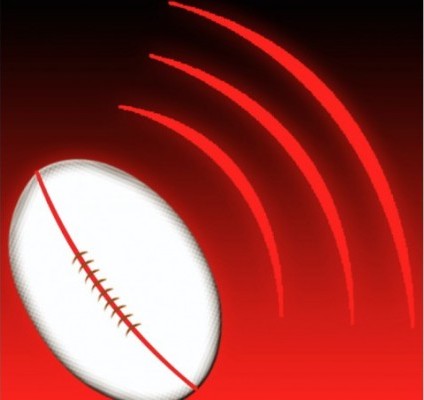HS Feedback - One Coach's Letter
HS Feedback - One Coach's Letter
Below is a letter sent to USA Rugby head of Youth & High School, Kurt Weaver, by Kat Aversano. A copy was sent to Goff Rugby Report, and we received permission to re-print it. This letter addresses several of the questions facing the game that USA Rugby is asking for feedback on.
Here it is:
______
October 20, 2016 RE: Eligibility Review
Dear Mr. Weaver and USA Rugby Management,
I feel that the USA Rugby Youth and High School on Eligibility, Age, Breakdowns, Variations, etc. is going in the wrong direction for the growth of rugby in the United States. Particularly, the review fails to understand the effect on girl’s rugby at the high school, middle school, and youth levels.
SUMMARY:
The rules and regulations under review do not promote growth of either the sport of rugby in the United States, nor do they promote the growth of rugby knowledge. If the United States is focused on creating the next generation of Eagles, this is not the way to do it from the Youth level. We also need to continue to focus on both 15s and 7s rugby. The US is not internationally successful in 15s, but that is not a reason to quit teaching it to young players – that is a reason to expose them to it.
Particularly, these items fail to recognize that the girl’s game grows differently than the boys game does. Boys play football and are therefore already brought together – that is an easily recruitable class of athletes. Girl’s rugby does not have a group like that to recruit from and must rely on other methods and “draws” to the sport. Girls are drawn to rugby by both the contact involved and the community. If you take that away some girls will not find reason to move from other sports to rugby.
MAIN ISSUES:
1. Focus on 7s v. 15s
This decision to focus on 7s would be detrimental to the growth of our sport. I understand that people are focusing on 7s because of the US success in 7s over 15s and its inclusion in the Olympics, but that does not mean that we abandon 15s. Rugby is an inclusive community and particularly for girls rugby it is body-positive. Girls that would not be celebrated in other sports due to their body type are welcomed into rugby. Eliminating traditional tight 5 players with larger stature would secure the US failure in international 15s for the next couple of decades. We need to grow the sport and welcome athletes of all type to get the best players through the rugby system.
From the girls’ rugby perspective, many of my athletes are larger girls who are shunned from other sports. They find a home, confidence, and strength by playing rugby. If we focus on 7s, we are abandoning these athletes. We are saying that their decision-making is less valuable than faster players. Other countries have developed their tight 5 players into versatile, mobile athletes. They do not merely crash, but are integral to playmaking. 15s rugby is demanding more, not less from our tight 5 ruggers – we cannot fail to develop them and still hope to succeed internationally.
If USA Rugby steers away from 15s, I imagine there will be many programs that opt out of participation under USA Rugby and will attempt to find a way to continue to play 15s at youth levels. USA Rugby has to acknowledge that the goal is not merely to produce international success, but to also serve the athletes that participate. Rugby is a sport that has personal honor and respect as its core values. It must continue to support the youth by helping to create better people not just better athletes.
Solution: We need to maintain the development of both 7s and 15s. There are many decisions in 15s that need to be honed from early ages, these decisions and rugby knowledge can only be developed by actually playing 15s. Limiting 15s to only high school, stifles both the recruiting pool for players and it stifles the growth of rugby knowledge by starting 15s decision making at 9th grade.
2. Non-Contact
Much of what draws athletes to rugby is the contact aspect. Particularly for girls, rugby is the sport where they are told it is good to use your physicality. They are told that they are powerful and strong. Many of my athletes are former softball, soccer, and lacrosse players who were penalized for being physical. They are assertive young women who are powerful – they were not allowed to be that in other sports. Rugby teaches girls to be strong and confident – a big part of that is the physical nature where they get to be proud of their bodies for what they do, not what they look like.
The contact aspect of youth rugby is one of the main things that differentiates rugby from other sports. Teaching them technique before they have the strength and weight to really hurt each other is also a reason to start earlier. As long as we are teaching the athletes how to be safe, protect both themselves and their opponents, and be honorable in their physicality, contact is perfectly fine. I have watched many HS football-to-rugby converts who are very dangerous tacklers. This can be remedied by teaching correct and safe contact from a younger age.
Also, looking to the long-term, contact is a part of the game. Decision in contact is an important part of the mental aspect of the game. If we expect to compete internationally, we cannot take these aspects away from the developmental years of our future national team athletes.
Solution: Allow full contact for middle and high school ages. If an SRO wants to also run a touch/flag version of rugby for middle school to support Rookie Rugby, that is great, but should not be required. Contact and decision-making in contact is an important skill that should be taught early and honed as one grows with the game.
3. Limitations on Age/Grade Play
a. 6th Grade into Middle School
b. 9th Grade into High School
Not allowing 6th graders to play on MS teams or 9th graders to play on HS teams also hinders the development. If we eliminate 6th graders in MS and 9th graders in HS rugby, athletes who attend the same school will not be playing with one another. Many coaches have connections in particular schools. Not allowing kids to play with their friends, or holding them back will result in them never playing or dropping out of rugby.
Grade identification within each school (the layout for US youth sports) also ignores the natural growth patterns of girls. Girls hit their growth spurts earlier than boys and therefore restricting 9th from playing in HS and 6th from playing in MS is not rational based on expected players sizing. I already have some 8th graders that shouldn’t be playing MS because of their size. Under the current age-grouping, I worry about some of my larger MS girls up against opposing smaller girls. The size of players cannot be guaranteed by a rule.
Solution: Allow 6th graders to play in MS and 9th graders to play in HS. AKA follow the proven US school/age group layout of 6, 7, 8 is MS and 9, 10, 11, 12 is HS. For the players whose size we are worried about – coaching and SRO discretion should be allowed. Allow coaches (with the parental input) to determine which league borderline players should be in. Small 9th graders should be allowed to play down to MS, while large 8th graders should be allowed to play HS. I understand that this is a difficult subject, but if we are truly focused on safety, coaches should be allowed discretion.
4. All-Star Events
My issue with the division of Varsity and JV is specific to the girl’s teams. While I understand the intent, this required division was disastrous for girl’s teams on the east coast this past RCT year. While Virginia could field both a V and JV team, they were not All-Star quality by far. Some states could not field a full squad for either V or JV and other states could only field one, leaving girls from the other team out in the cold.
There is no reason that division like this should occur. It does not grow the sport, nor does allowing players to play with other states if their own state cannot field a team. I had many parents that were upset by the result of the V/JV division this past year. Additionally, there is no reason to separate the girls that have played all season against each other. They have shown that they are capable of holding their own. We all know of athletes that would be limited to the JV team, but are some of the best even compared to Varsity age. We limit these players’ ability and possibility of growth when we assign them to a “lower” quality of play.
Solution: For girls, allow there to be a High School All-Star Team, not Varsity/JV from each state. For states that have an abundance of talent, it could be possible for that state to field an A and B side if they so choose. With the division of V/JV coaches do not get best of the best from that state and we dilute the talent pool viewed by scouts.
5. High School and College Playing
There should not be a ban against High School athletes contact with College athletes. In some sparse localities, the only way for HS teams to fill out practices or run a scrimmage, would be to scrimmage against a college squad. Obviously, even the best high school team should not be playing a DI Elite team, but some DII teams are perfectly suited to have controlled practices, scrimmages, or touch matches (with full contact rucks and mauls) with High School teams or a state All-Star team.
Additionally, many high school teams have good relationships with colleges and would like a chance to provide a pathway from one team to another. Building these relationships will keep players in the game and looking toward the future.
Solution: Again, coaches should be able to use discretion to determine what their players are ready for. If a partnership is able to be formed between HS and College teams, it should be used to advance the knowledge of HS players and grow the game. We have to expand the rugby-knowledge and reaction time, not stifle it.
Please take my thought and insight into consideration. Many coaches are upset with USA Rugby’s administration of Youth programs. Additionally, it is seen as hypocritical that there is a high school girl traveling and playing with the Women’s National team, yet individual coaches are not allowed to use their own discretion regarding the ability of their own players to play up or down a level.
Rugby is a growing sport, but it must be managed correctly. We must not forget that the reason it has grown is because it is not like other sports – particularly other girls’ sports. This is a benefit not a hindrance to its popularity.
Best,
Katherine “Kat” Aversano
Head Coach, Fort Hunt Girls Rugby
Alexandria, VA











